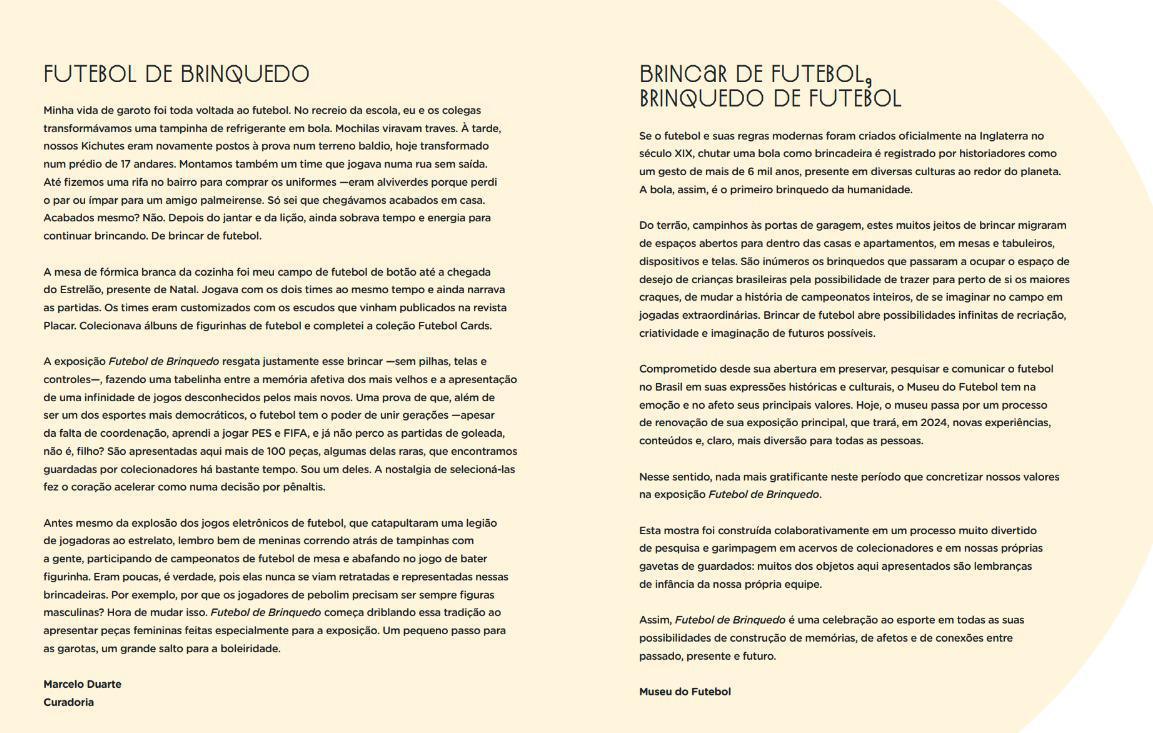TOY FOOTBALL
My life as a boy revolved around soccer. During recess, my classmates and I would transform a soda cap into a makeshift ball. Backpacks became goalposts. In the afternoon, our Kichutes, a type of soccer cleat that was hugely popular in Brazil during the 1980s or 1990s, were once again put to the test in a vacant lot, now turned into a 17-storey building. We also set up a team that played in a cul-de-sac. We even had a neighborhood raffle to buy the uniforms—they were white and green because I lost at odds and evens to a friend who was a Palmeiras fan. All I know is, we'd get home dead tired. Dead tired? Well, not really. After dinner and homework, we still had time and energy to keep playing. Playing toy soccer.
The white Formica table in the kitchen was my button football field until the arrival of my Christmas present, the Estrelão—an old tabletop football game in Brazil. I'd play for both teams at the same time while also commentating on the matches. The teams were customized with crests featured in the football magazine Placar. I had a collection of football sticker albums and completed the Futebol Cards series.
This kind of play—without batteries, screens, and controllers—is precisely what the exhibition Toy Football is bringing back, executing a give-and-go between the affective memory of the older fans and the presentation of a myriad of games unknown to the younger ones. This is proof that, apart from being one of the most democratic sports, football is capable of uniting generations—despite my lack of coordination, I've learnt to play PES and FIFA, and I don't get thrashed anymore, right, son? Here we present more that a hundred pieces, including many rare items found in the collections of long-time enthusiasts. I'm one of them. The nostalgia I felt while selecting them made my heart race like during a penalty shoot-out.
Even before the football videogame boom, which propelled a legion of female players to stardom, I distinctly remember girls running with us chasing bottle caps, taking part in foosball tournaments, and killing it in the game of flipping stickers. There were few of them, it's true, since they had never seen themselves depicted or represented in these games. Why do all foosball players have to be male figures, for example? It's about time we change that. Toy Football starts by dribbling around this tradition and presenting women figures especially made for the exhibition. That's one small step for girls, one giant leap for footballkind.
Marcelo Duarte
curator


